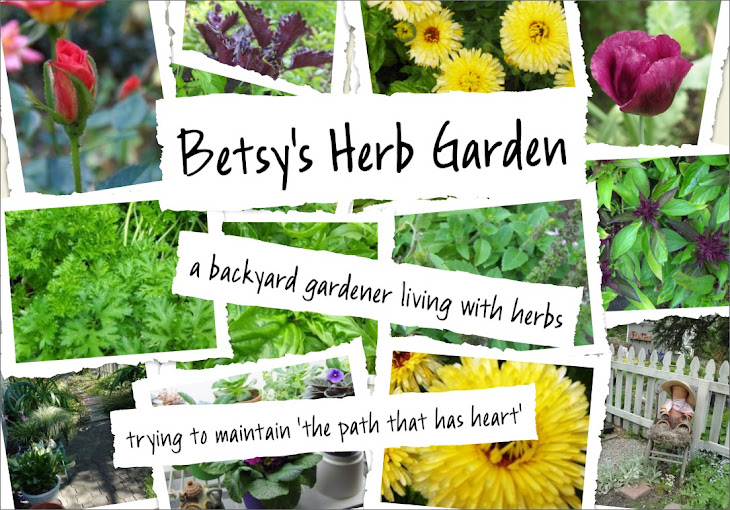After weeding, weeding, weeding the purslane out of the vegetable beds that we built from fresh compost at the Home Street garden, fellow gardener Mel sent the following pertinent article to our little gardening group, supporting what I'd been telling everyone about the lowly weed we were discarding, Portulaca oleracea.
Purslane. My friend Milli calls it 'pusley' and won't eat it because of the name... but purslane has the richest concentration of omega-3 fatty acid of any vegetable source.
I've been adding fresh purslane as a green garnish to fajitas and baba ganoush for some time, and lately had the inspiration to add it to stir frys, at the last minute to keep it from melting away from the heat of the frying pan.
My friend Sharron tells me she puts purslane in omlets, which is traditionally a Mexican recipe.
Even my CSA farm has been adding purslane to the salad greens in our shares, urging us to find ways to use this healthy little green.
If you can put a little 'pursley' in your diet, I urge you try it... it is one of the richest vegetable sources of omega-3 fatty acids. You never need to plant it, and if you pick it from healthy soil in your garden, you can skip the heavy metals and other pollution that come to you in omega-3 rich fish from the market.
Purslane can be used in variety of dishes
by Leslie Land
New York Times Service
Saturday, August 25, 2007
QUESTION: I have a tabbouleh recipe that calls for purslane, but
the only purslane I know is the horrible weed I battle every year
in my garden. Is it really edible, or is the recipe calling for some-
thing else?
ANSWER: Lebanese cooks know that the horrible weed Portulaca
oleracea has just the right brightly acid flavor and crisp juicy
texture to be delicious in tabbouleh.
Purslane appears in Japanese pickles, Mexican stews and Indian
curries. It's also used in the cuisines of France, Russia, Malaysia
and Manhattan, where chefs have been playing with it for years.
The chefs are probably using cultivated purslanes such as garden
and golden, which have more upright growth, larger leaves and
more toothsome stems than your (lifetime) opponent. And unlike
the weed, they are easy to clean.
But cultivated purslanes are also likely to become weeds before
long, so unless you too have a restaurant you might prefer sticking
with the one you've got instead of adding more.
And you might want to stick with eating it raw. Cooked purslane
is as mucilaginous as okra.
On the other hand, it shrinks when heated, so if you eat it cooked
you can eat more of it. Purslane is a powerhouse of vitamins,
minerals and the kinds of fatty acids that justify fish oil.
Portulaca oleracea is used in many ethnic cuisines for its brightly
acidic flavor.
================================
So today I googled purslane and found this abstract...
http://www.ncbi.nlm.nih.gov/sites/entrez?cmd=Retrieve&db=PubMed&list_uids=1354675&dopt=AbstractPlus
http://www.jacn.org/cgi/content/abstract/11/4/374
(Journal of the American College of Nutrition)
Common purslane: a source of omega-3 fatty acids and antioxidants
A. P. Simopoulos, H. A. Norman, J. E. Gillaspy and J. A. Duke
Center for Genetics, Nutrition and Health, Washington, DC 20009.
omega-3 fatty acids, alpha-tocopherol, ascorbic acid, beta-carotene and glutathione determined in leaves of purslane (Portulaca oleracea), grown in both a controlled growth chamber and in the wild, were compared in composition to spinach. Leaves from both samples of purslane contained higher amounts of alpha-linolenic acid (18:3w3) than did leaves of spinach. Chamber-grown purslane contained the highest amount of 18:3w3. Samples from the two kinds of purslane contained higher leaves of alpha-tocopherol, ascorbic acid and glutathione than did spinach. Chamber-grown purslane was richer in all three and the amount of alpha-tocopherol was seven times higher than that found in spinach, whereas spinach was slightly higher in beta-carotene. One hundred grams of fresh purslane leaves (one serving) contain about 300-400 mg of 18:3w3; 12.2 mg of alpha-tocopherol; 26.6 mg of ascorbic acid; 1.9 mg of beta-carotene; and 14.8 mg of glutathione. We confirm that purslane is a nutritious food rich in omega-3 fatty acids and antioxidants.

No comments:
Post a Comment